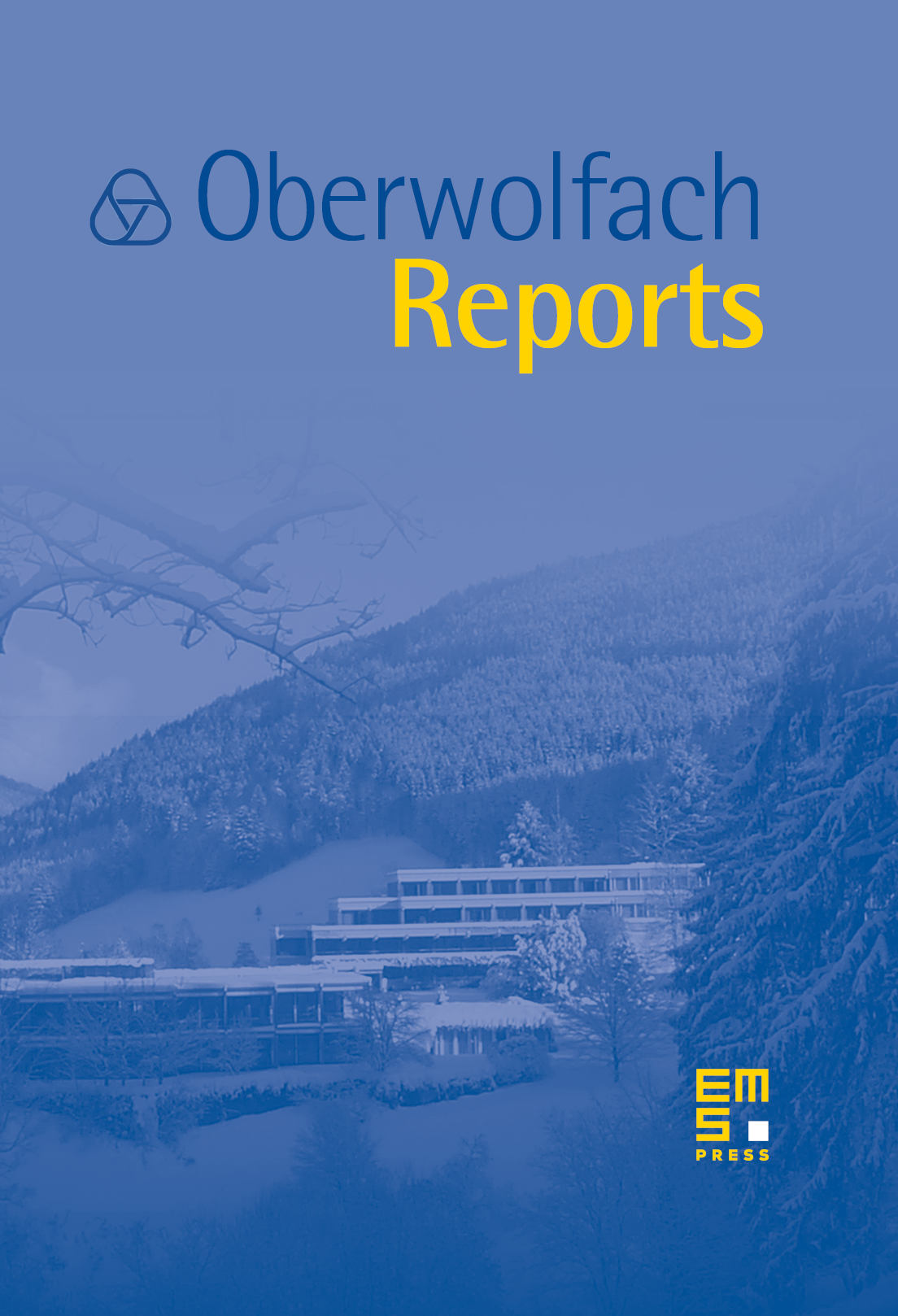Permutation Groups
Robert M. Guralnick
University of Southern California, Los Angeles, United StatesCheryl E. Praeger
The University of Western Australia, Crawley, AustraliaJan Saxl
University of Cambridge, United KingdomKatrin Tent
Universität Münster, Germany

Abstract
The workshop Permutation groups organised by Robert Guralnick (Southern California), Cheryl Praeger (Western Australia), Jan Saxl (Cambridge) and Katrin Tent (Bielefeld) was held August 5th–11th, 2007. The focus was recent developments in permutation group theory and their influence on, and from, group representation theory, algebraic graph theory and other areas of geometry and combinatorics, algebraic geometry, model theory and infinite symmetrical structures. It was well attended with 50 participants.
Especially valuable was the program to support young researchers which gave the opportunity for a considerable number of young mathematicians to participate in the workshop. They benefited from the ‘Oberwolfach experience’ and also enlivened and contributed enormously to the success of the meeting.
The workshop had a friendly and vibrant atmosphere, aided by the excellent facilities of the Institute. All participants appreciated the beautiful lecture by John G. Thompson entitled ‘The divisor matrix and ’. (In fact, this meeting was the first Oberwolfach workshop in over twenty years that Thompson had attended.) There were 26 other talks, and the program featured in each of the first five sessions at least one talk by a student or young researcher at the beginning of their career. This facilitated interaction between younger and more established researchers. The number of talks was restricted to give plenty of time for discussion and cooperation among the participants. Other communications were presented as posters.
Highlights of the workshop addressed both fundamental permutation group theory, and also significant outcomes from applying permutation group theory and methods in combinatorics, model theory and other areas. Some topics arose in more than one context, forming new connections. A common feature of many contributions was application of the finite simple group classification, or new results on the structure of simple groups. As examples, we mention two highlights reported by early career participants.
The question of base size of permutation actions is of importance in computational group theory as well as in the study of the graph isomorphism problem. Recent research has thrown much light on the base sizes of actions of almost simple groups in particular. Burness reported on the very recent proof of a conjecture of Cameron and Kantor dating from 1993 concerning non-standard permutation actions of almost simple groups: these are all primitive actions apart from actions of alternating and symmetric groups on subsets or partitions, and of classical groups on subspaces or pairs of complementary subspaces. In all the latter families the minimum base size is unbounded as the group order increases. The somewhat surprising conjecture, now proved, is that the minimum base size of non-standard permutation groups is at most 7, with the unique example where this bound is attained being the Mathieu group in its natural action on 24 points.
Expander graphs play an important role in computer science and combinatorics, and, for example, are significant in modelling and analysing communication networks. In particular, their diameters grow only logarithmically with the numbers of vertices. This property on diameters was proved in 1989 by Babai, Kantor and Lubotzky to hold for suitable Cayley graphs of simple groups: specifically for each finite nonabelian simple group , they constructed a valency 7 Cayley graph for with diameter at most a constant times . Although their graphs were not expanders, they conjectured that there exists an absolute constant such that all infinite families of simple groups give rise to families of valency Cayley graphs that are expanders. Kassabov lectured on amazing progress towards proving this conjecture – it is now proved for all simple groups apart from the Suzuki groups.
- Other major areas discussed in lectures include the following:
- fundamental theory for families of transitive permutation groups, such as semi-primitive and extremely primitive groups;
- elements and subgroup structure of finite and algebraic groups;
- infinite permutation groups and automorphism groups of infinite structures;
- uses of permutation group methods in geometry and combinatorics, and geometric methods in group theory.
It was a very happy and successful workshop. Indeed, several of the most distinguished participants commented that this was one of the best Oberwolfach meetings they had attended, with plenty of time for collaboration, and outstanding talks.
Extended abstracts of the talks mentioned, as well as all the others, are given below (in the order in which they were presented).
Cite this article
Robert M. Guralnick, Cheryl E. Praeger, Jan Saxl, Katrin Tent, Permutation Groups. Oberwolfach Rep. 4 (2007), no. 3, pp. 2173–2236
DOI 10.4171/OWR/2007/37